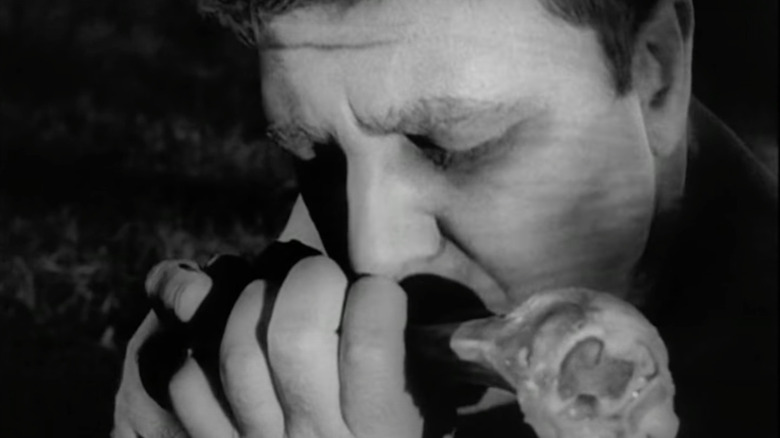The Sweet Treat Night Of The Living Dead Used For Fake Blood
George A. Romero's "Night of the Living Dead" is one of the fundamental texts of the modern horror genre. The 1968 feature film not only contributed to the rise of horror movies in U.S. film, but it was also one of the earliest movies about zombies, and it played a notable role in bringing a new level of gore to the big screen. It might not seem too graphic (in terms of gore) by today's standards, but "Night of the Living Dead" gave audiences a vision of human viscera not generally seen in movies at that point in time. The zombies in Romero's movie were shown to have a penchant for disemboweling and devouring their victims in a level of visual detail that hadn't been shown in previous movies.
The film, of course, went on to become a pop culture phenomenon, with several direct sequels, including "Dawn of the Dead," "Day of the Dead," and "Land of the Dead." Countless zombie movies draw on (or are inspired) by Romero's 1968 pic, including "28 Days Later," "Shaun of the Dead," Zack Snyder's "Dawn of the Dead," and even the AMC series "The Walking Dead" — pretty much any piece of entertainment that depicts an undead, carnivorous zombie.
Despite the massive pop-culture footprint of "Night of the Living Dead," there are a few pieces of trivia about the film that aren't widely known. This includes the revelation of the surprising blend of ingredients Romero and his crew used in one memorable scene to simulate the remains of the zombies' victims.
The blood in Night of the Living Dead is actually this ice cream topper
There are all kinds of techniques and trade secrets for creating gore effects in horror movies today. But, when director George A. Romero was making "Night of the Living Dead" in the late 1960s, he and his crew came up with some inventive ways to depict the gruesome details of their story. It's been revealed in more recent years (via JSTOR) that, in at least one "Night of the Living Dead" scene, the grisly human remains the zombies consume (which audiences are meant to think is flesh and blood) are ham and chocolate sauce.
A decision like this required plenty of inspiration and ingenuity, but it also isn't without precedent. The Stanford Blood Center wrote on the famous example of Alfred Hitchcock using chocolate syrup as a stand-in for Marion Crane's blood during her infamous shower murder sequence in "Psycho." Back in the 1960s, when black-and-white horror films were still commonplace, chocolate seemed to serve as a reliable stand-in for onscreen blood — but Romero seems to have been the first person to combine it with ham for a gorier, more explicit bit of onscreen viscera.

